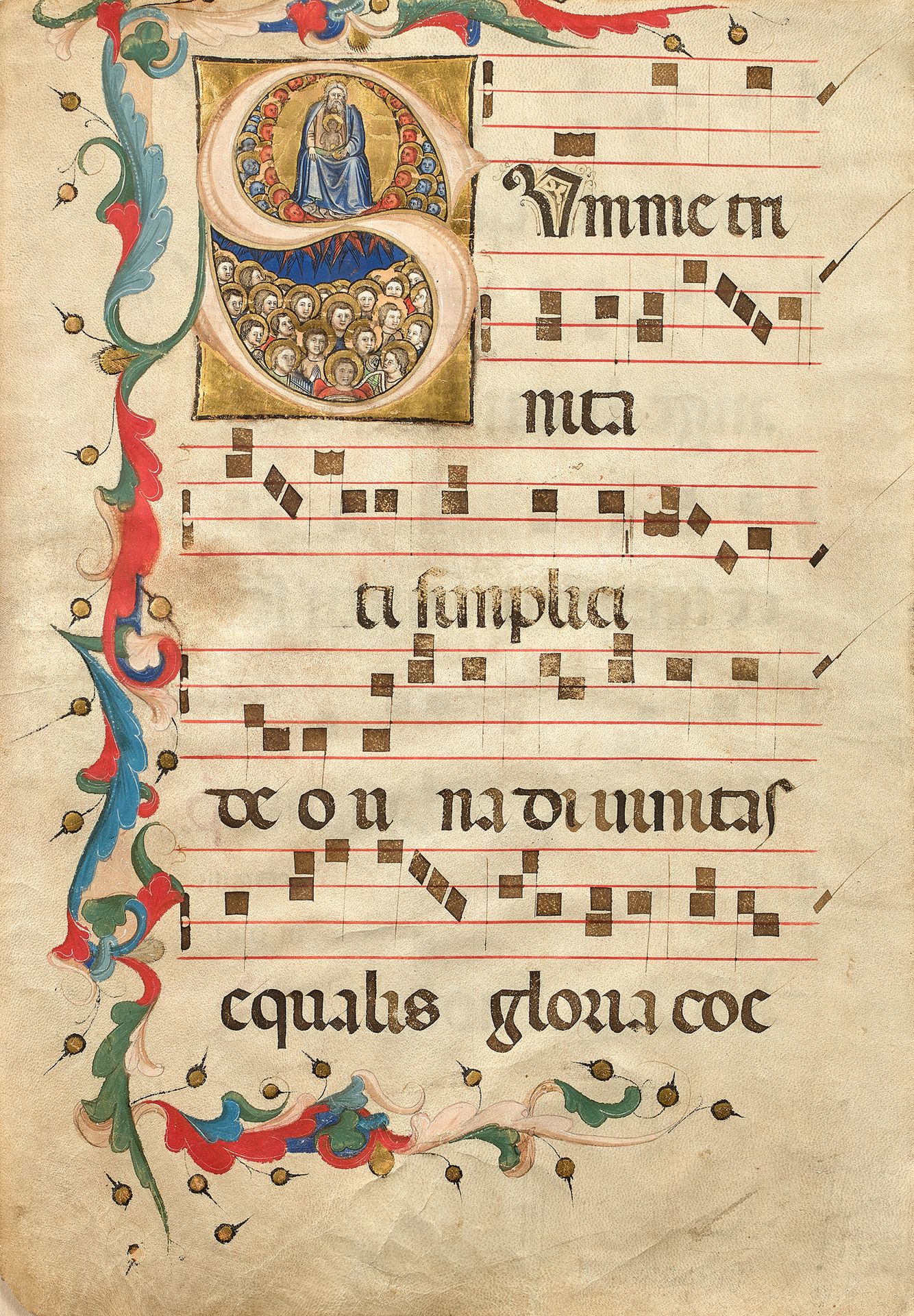Description
MAÎTRE de la GENÈSE (actif en Italie vers 1390)
Initial S with the Adoration of the Holy Trinity, antiphonary page Tempera and gold highlights on parchment. Bears an inscription dominum quem laudant angeli cui Cherubim et Seraphim sanctus Sanctus proclamant. Inscribed on the reverse with Summe Trinitati simplici deo una divinitas equalis gloria coe [terna majestas patri prolique sanctoque flamini qui totum subdit suis orbem legibus 58 x 40.5 cm Our illuminator's style is closely related to the so-called Second Master of Genesis. Compared to his later works, such as the miniatures of the Antiphonaries of Monselice, where he articulates his forms, in particular the facial features of the faces with strong black outlines, the faces here seem to be modelled with a slight graphic emphasis, producing softer-looking features and a smoother skin (see F. Toniolo, "La Bibbia Istoriata padovana", in La Miniatura a Padova dal Medioevo al Settecento, Modena, 1999, pp. 161-176). The illuminator of this beautiful leaf is strongly influenced by Giotto's later interpreters in Padua and generally by Paduan painting of the last quarter of the fourteenth century. The decoration of the border with coloured tendrils made of elongated acanthus leaves in blue, red and green is based on the traditional patterns of Bolognese book illumination, which influenced the artistic developments of Paduan book illumination in the 14th and early 15th centuries. However, our illuminator refers to a figurative repertoire familiar to the tradition of the main fresco and panel painters working in Padua around 1370-1380, such as Altichiero and above all Giusto da Menabuoi (ca. 1320-1391): his brilliant frescoes of the Old Testament in the cathedral's baptistery inspired the illuminators of the late Trecento in and around Padua. On our sheet, the rounded faces of the angels with their large cheeks and alert eyes are clearly reminiscent of the models founded by Giusto da Menabuoi. The same artistic milieu was responsible for the decoration of the somewhat later series of choir books in the Collegiata of Monselice around 1390-1410 (now in the Biblioteca Capitolare in Padua, mss. E18-24). The text on both sides refers to the adoration of the Holy Trinity by all the saints and angels.
152
MAÎTRE de la GENÈSE (actif en Italie vers 1390)
